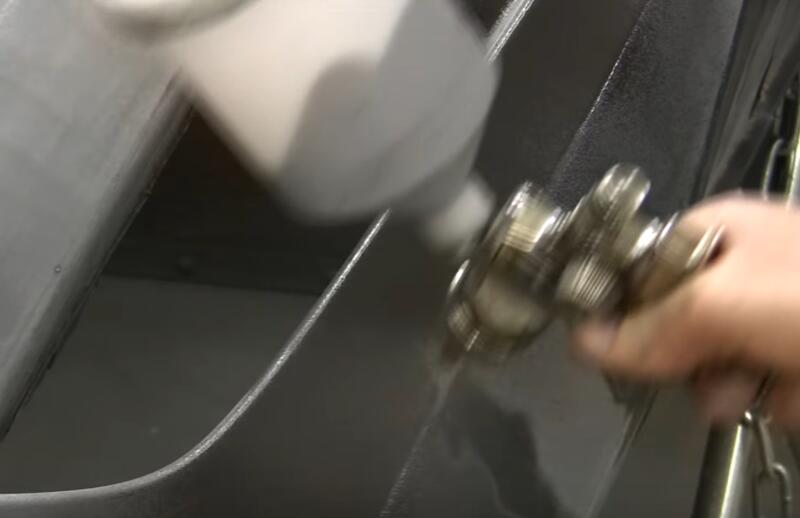This instruction will show you how to repairing a torn TPO bumper by using a hot air plastic welder and materials from Polyvance.
Below is similar topic article for further reference:
How to DIY Repair Big Crack on Bumper for Nissan
How to Repair Broken Straight Flange Slot Tabs on Bumper Cover
Procedures:
Clean the repair area with plastic cleaner. Put on a heavy wet coat and wipe the area with a clean paper towel. Wipe in one direction to avoid re-contaminating the surface.
Use a DA(Dual Action) sander with 80 grit sandpaper to remove any coatings that are on the plastic,Remove paint on both sides of the crack and along the crack line
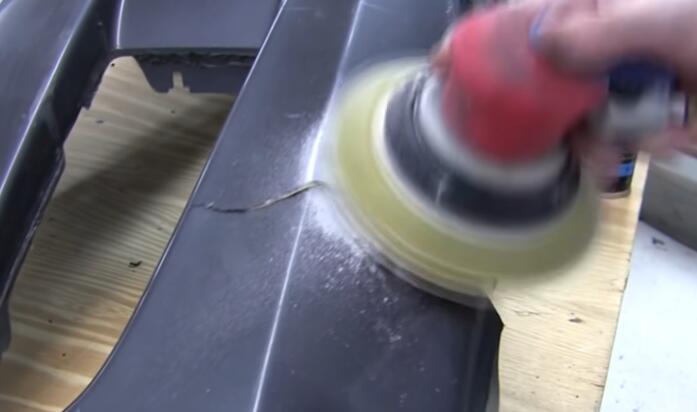
After removing all the paint and exposed the bare plastic, blow the dust away with compressed air
Turn the bumper over and clean the plastic with plastic cleaner, if there is any paint on the surface, you will need to remove the paint with a DA sander.
Align the damage and apply aluminum body tape, apply take along the entire crack and expecially at the edge as this is the most difficult part to keep aligned. Aluminum body tape is very stiff and can withstand the heat from the welding process, leave and edge of the tape unstuck to ease removal.
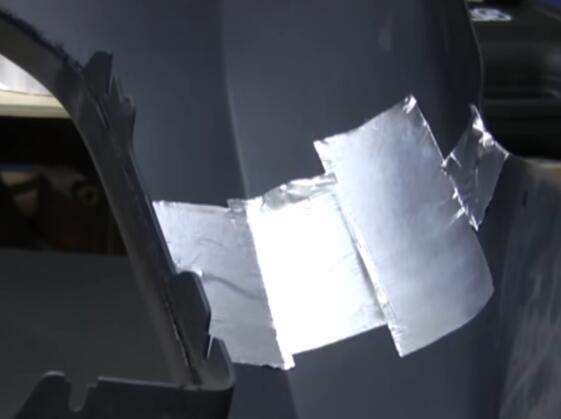
Use a rotary tool with a teardrop shaped bit, be sure to round off any sharp edges
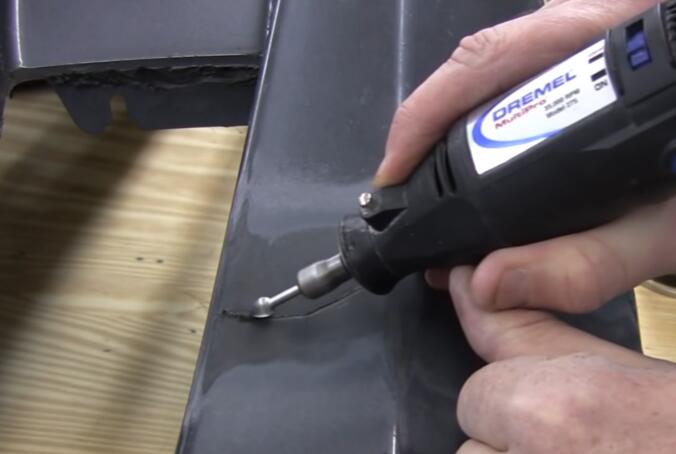
From the back of the bumper, we find the symbol TPO.
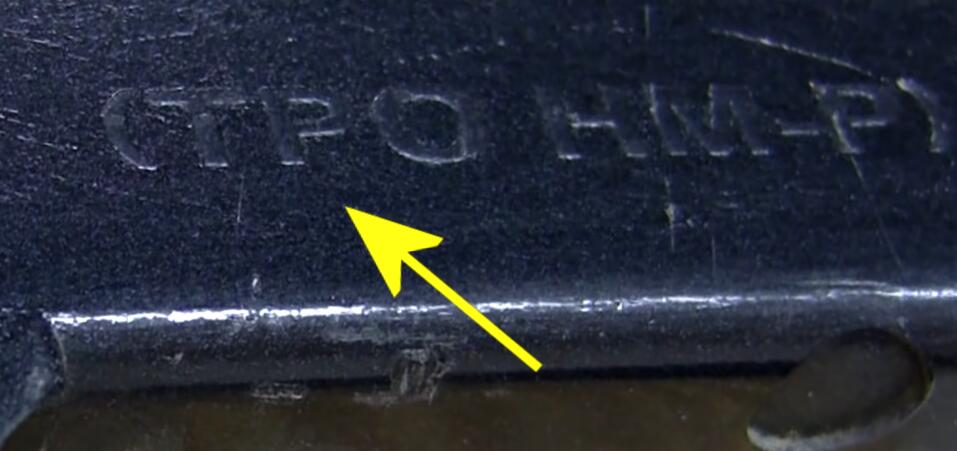
Look up the symbol in the Book of Plastic Repair that was included with your welder or on the Internet at polyvance.com.
We’ll be using a TPO rod for this repair.
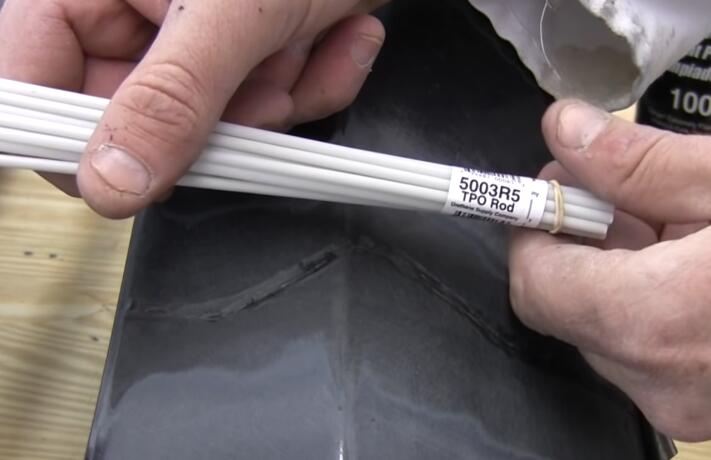
Set the temperature of your welder to approximately eight hundred thirty degrees Fahrenheit, and wait for the welder to achieve operating temperature
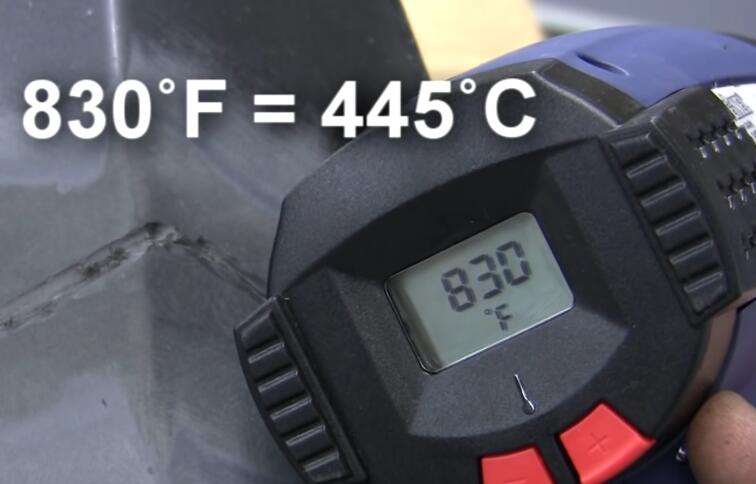
Heat the tip of the rod and the base material with the welder until the rod melts together with the base material. Apply downward pressure on the rod as it is melting. The downward pressure will give the rod better penetration into the base material.
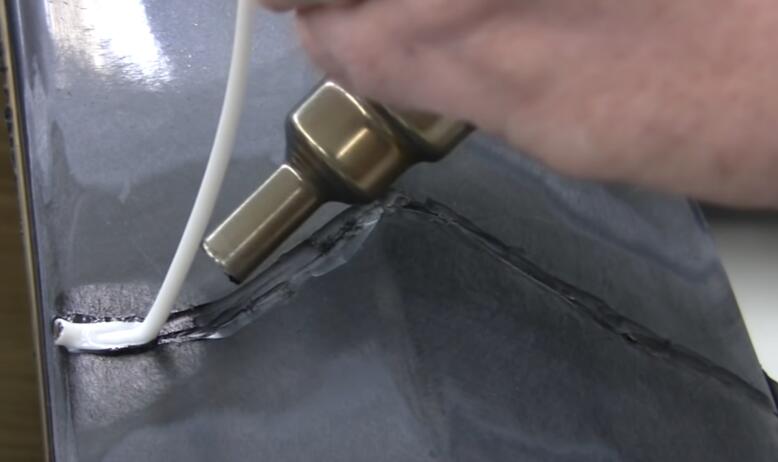
Allow time for the plastic to cool, then peel the tape from the opposite side.
Use a rotary tool with a teardrop shaped bit to grind a V-groove along the crack line.
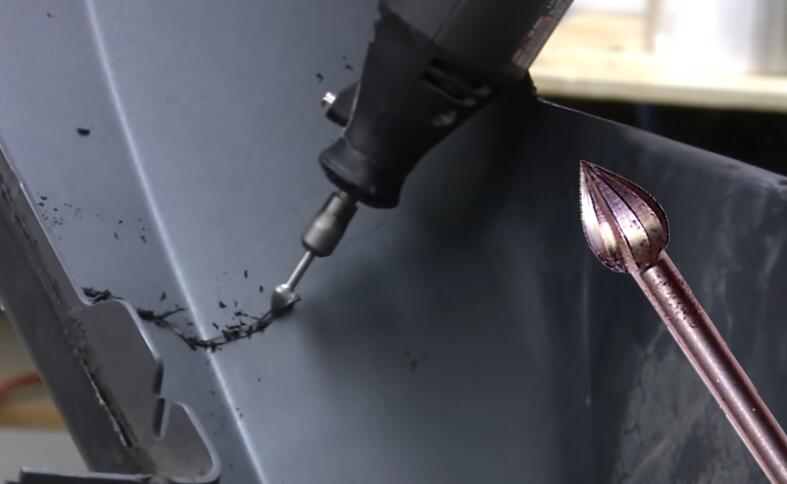
Heat the tip of the rod and the base material with the welder until the rod melts together with the base material, apply downward pressure on the rod as it is melting. Continue melting the rod along the crack line until the crack is completely filled.
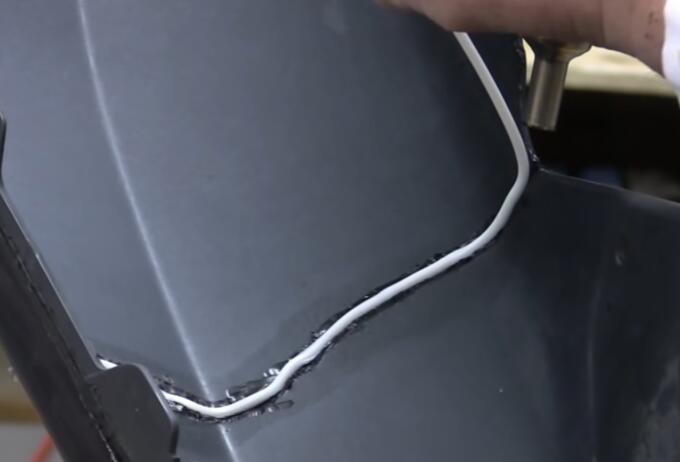
Use a rotary tool with a teardrop shaped cutting bit to grind away excess plastic.
Grind the plastic until it is slightly below the level of the surrounding plastic
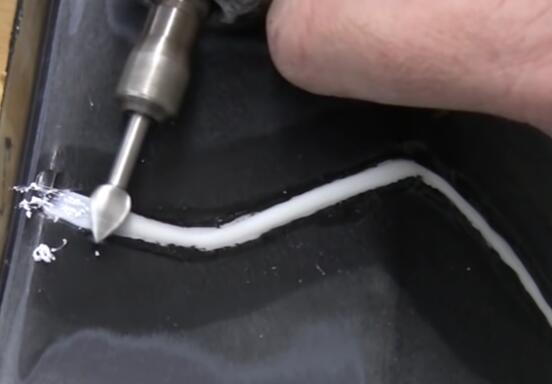
Use a DA sander and 80 grit sandpaper and sand away the high spots and to abrade the surface. Abrading the surface will help the epoxy filler bond better.
Since the plastic is TPO,apply adhesion promoter to any exposed plastic,so that the filler will have a better bond

Parts A and B must be mixed in equal proportions to cure properly, adding more part A will not make it cure quicker.
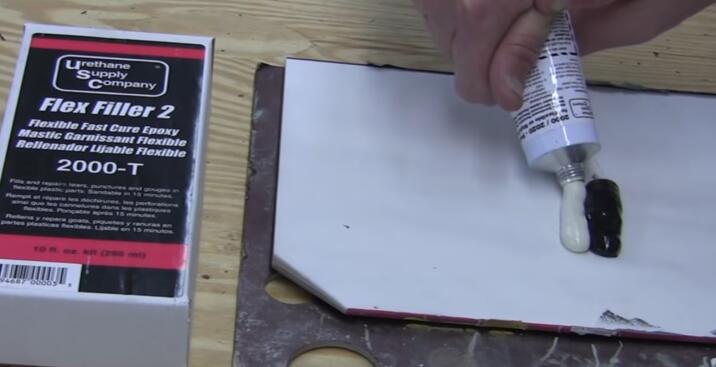
Use a body spreader to mix the two components. Continue mixing until there are no streaks and you have a uniform color. Be careful not to mix air into the filler as this will create pinholes in the epoxy. Apply the filler to the repair area and allow time for the epoxy to cure fully.
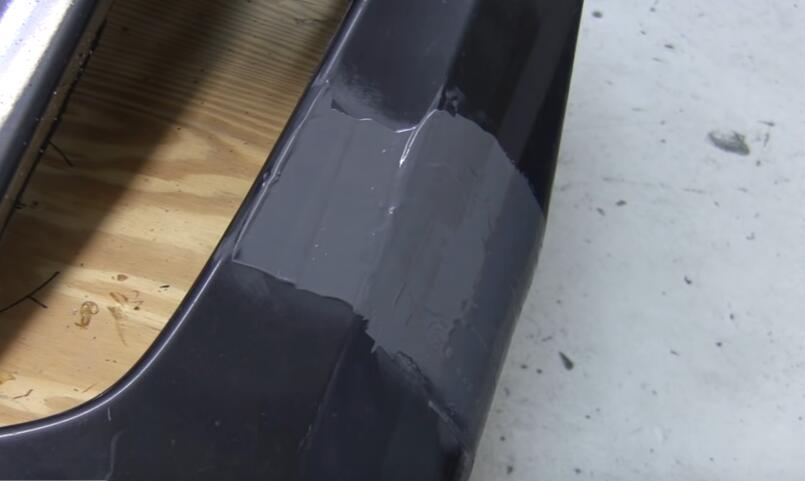
Even though the epoxy is sandable in about 20 minutes, it is not fully cured.
Sand and contour the filler to match the profile of the surrounding plastic and finish sanding with 180 grit sandpaper.
Sand the area where primer will be applied with 320 grit sandpaper.
The tight spots may need to be sanded by hand.
After finish it, blow the dust away with compressed air or use a tack cloth.
Spray a light coat of adhesion promoter on any exposed plastic and allow time for it to dry
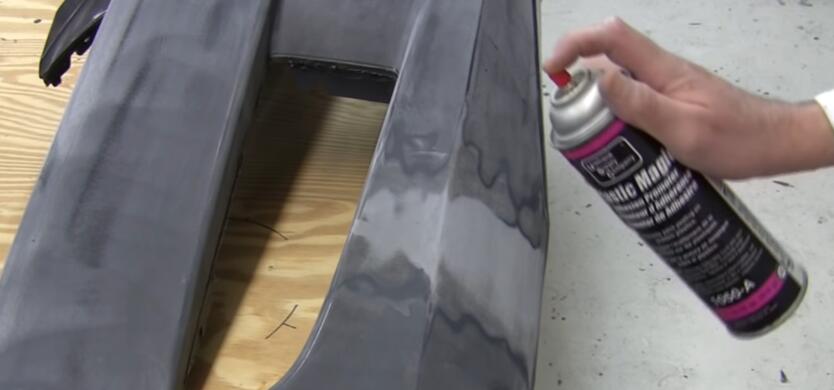
Spray primer on any areas that will be top coated
